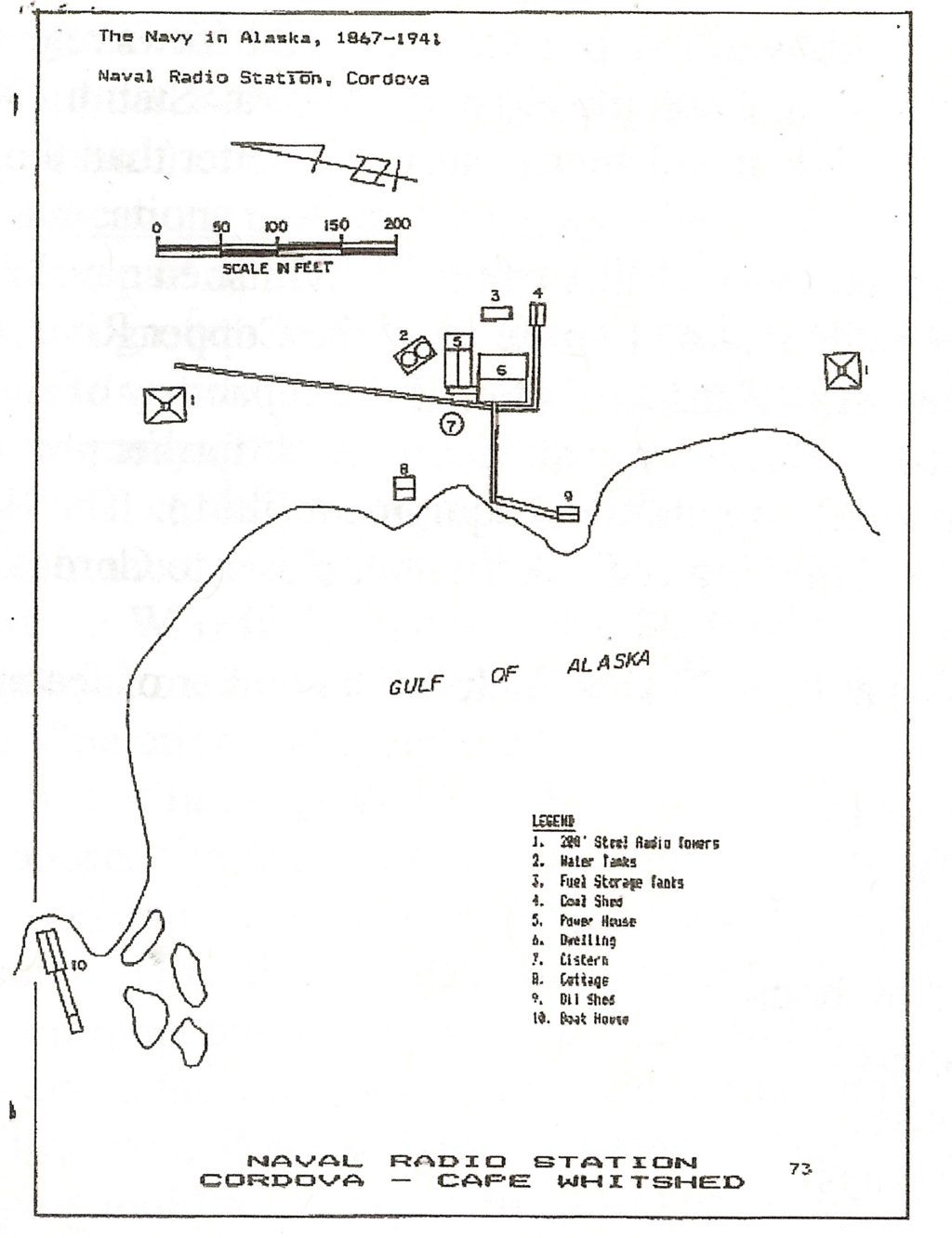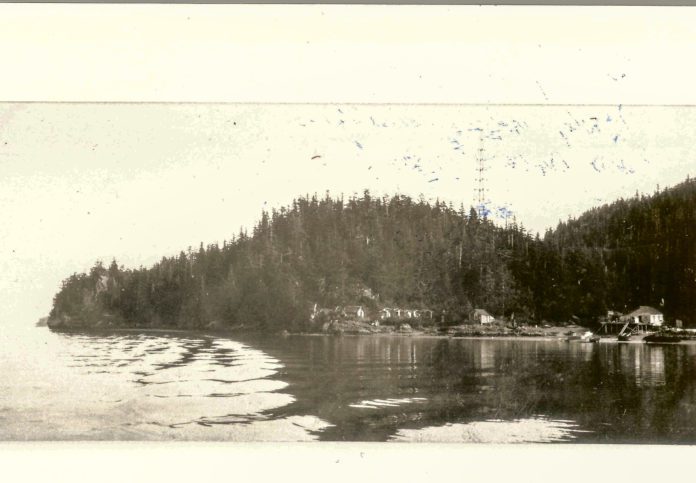The Cordova Historical Museum was recently asked about the history of the Naval radio stations in our area. It’s always fun to share the answers outside of social media, so the research team will share a portion of the history each week this month. First, let’s set the stage for the era in which communication methods in Alaska began to advance.
Communication technology advanced rapidly in the latter part of the 19th century, and became very important with the discovery of gold in the Klondike and Alaska which resulted in huge population growth.
To maintain order, the Army in 1897 established military posts in various parts of Alaska and built an extensive system of telegraph wires and submarine cables for communication with each northern post and Seattle. Headquarters for the military in Alaska were at Saint Michael.
By 1904, the Washington-Alaska Military Cable and Telegraph Systems (WAMCATS) connected Saint Michael and other community centers in Alaska to Seattle over 2,000 miles of submarine cable and over 1,000 miles of land line connections. Operation and maintenance costs were exorbitant, and the Army began to convert to the brand-new science of radio.
In creeps the Army/Navy rivalry (that goes beyond football games); the U.S. Navy opposed the Army’s foray into radio technology, arguing that because the signals were transmitted across open water, radio should be under their purview. The Navy maintained that they should also control radio communication between ships at sea, government messages sent over sea and the receiving of these messages.
It was feared that commercial competition could result in crowded airwaves and disaster in the event of a maritime emergency. And Alaska was perceived as a maritime province with great potential for coaling stations and on-going Bering Sea Patrol. President Theodore Roosevelt concurred and in 1904 decreed that all governmental messages crossing the boundaries of the U.S. would be the responsibility of the U.S. Navy.
The Navy soon came under intense pressure from the Army and other government departments to provide a network of radio stations along the Alaskan coast. The Navy responded immediately with the first naval radio station at Japonski Island near Sitka in 1907.

The early radio stations had a limited range – that very first radio link to regularly operate between Saint Michael and Nome by the U.S. Army Signal Corps in 1903 only covered a distance of 100 miles. This meant there was a need for additional Naval radio stations on the coast of Southcentral Alaska and along the 1,000 mile plus Aleutian Islands chain.
Under pressure from the Chief Signal Officer of the army, the Navy also established a radio station during the summer of 1908 on 40 acres of land at Point Whitshed, nine miles from Cordova. The terrain at Point Whitshed rises steeply from the beach, which faces south toward the Gulf of Alaska, to an elevation of about 500 feet.
Locals in the area at first weren’t happy about the Navy taking over the point. In June of 1908, a mining claim had been filed covering the same locality; this potential conflict over use of the site had gone initially undetected by the naval construction group.
By October 19, 1910, the electrician-in-charge of the station reported that the miners had constructed a tunnel under the south antenna tower and were preparing to use dynamite to advance their work. In the view of this radioman, blasting at that spot would seriously disrupt the operations of the governments’ property! The Navy assumed an uncompromising stance in the matter citing the inviolability of a naval reservation and the matter was settled without damage to Navy property.
Cordovans, however, did begin to understand the importance and excitement of the Navy’s wireless project. Here is a report from the Cordova Daily Times:
“The government wireless station being established out at Whitshed is of far more importance to Cordova than many would think…..In the first place the installation of the plant with all the necessary building and appliances thereunto belonging will cost in the neighborhood of $70,000…..Professor Hanscome [sic], the expert wireless man, is the Marconi of the west….Prof. Hanscome has a wire stretched between two tall trees over there in such a manner that he is making it do temporarily while the station is being built…he can hear all that the steamers are saying to each other in these waters but as yet can say nothing.”
These photos are from the collection of the Cordova Historical Society.






